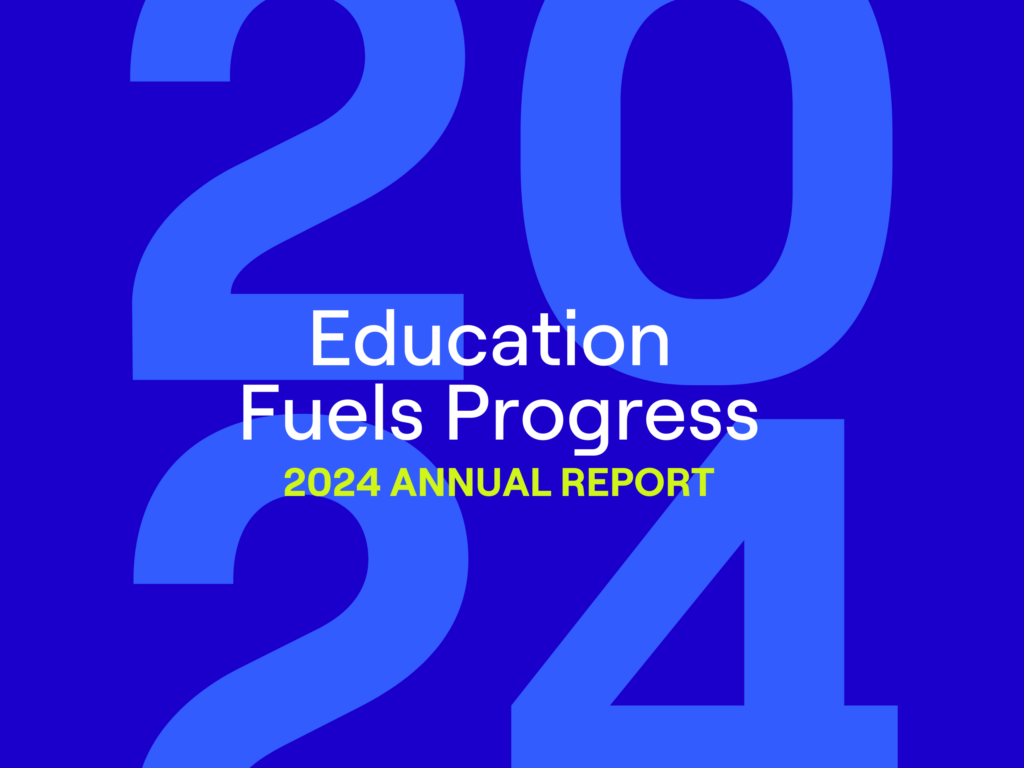Brief Overview
The following is a synopsis on the current landscape of special education within U.S. public education. While realizing technology is the not the panacea for issues faced in special education, technology can enable more quality student-teacher interaction.
Enabling Positive Outcomes for Students with Disabilities Through Technology
NewSchools Venture Fund is committed in supporting special education tools. Our market research conversations – interviews with educators, thought leaders, and entrepreneurs across the country – have been enlightening, offering up hope to impact the quality of special education through the use of technology. Compared to the early years of assistive technology, prices on tools have significantly declined. These days, tools are far easier to implement within a classroom environment with use cases that address executive functioning, augment and create alternative communication, and enable reading and writing skills. Greater inclusiveness and applicability to both students with and without disabilities has prompted the adoption of frameworks like Universal Design for Learning (UDL) and Multi-Tiered Systems of Support (MTSS). Technology can be the catalyst to address critical student needs. We aim to position the NewSchools Special Education Ed Tech Challenge as a way to accelerate focus in the towards these critical issues and create a spotlight for innovative companies developing solutions.
Demographics at a Glance
To fully grasp the challenges faced in special education, it is crucial to picture the magnitude of population of students with disabilities within the context of the overall student population – as well as the complexity of disabilities that fall under the Individuals with Disabilities Education Act (IDEA). The special education student population peaked during the 2004-2005 school year with an eventual decline that seemed to indicate a stabilization period. However, there has been an uptick in recent years. Once at a high of 6.72 million (comprising 13.8% of all students), students with disabilities now hover at 6.46 million (12.9%).
F1: Overall Population of Students with Disabilities
[infogram id=”f1_overall_population_of_students_with_disabilities” prefix=”Ui5″ format=”interactive” title=”F1: Overall Population of Students with Disabilities”]
Among the thirteen disability types designated under IDEA, a significant proportion is represented by the specific learning disability (35%) and speech or language impairment (21%) categories. Other health impairments (13%) and autism (8%) are designations that have grown the quickest, with hypotheses linked to greater access to medical diagnoses and overidentification of students within those categories.
F2: Percentage of Students with Disabilities by Type
[infogram id=”f2_percentage_of_students_with_disabilities_by_type” prefix=”HeX” format=”interactive” title=”F2: Percentage of Students with Disabilities by Type”]
Technology is capable of reducing hurdles by offering personalized supports and synthesizing student and classroom data outcomes for teachers and administrators.
F3: Percentage of Students with Disabilities by State
[infogram id=”f3_percentage_of_students_with_disabilities_by_state_13_14″ prefix=”NJZ” format=”interactive” title=”F3: Percentage of Students with Disabilities by State ('13-'14)”]
Challenges of Race and Equity within Special Education
An additional layer to the demographic shifts described above is the growing tension around social equity within special education. The quality of programs and services provided to students with disabilities vary wildly based on socioeconomic factors. While 51 percent of all school districts face difficulty recruiting highly qualified special education teachers, the figure increases to 90 percent for high-poverty schools. Race also plays a contributing factor in the diagnosis and identification of special education students. For example, there is an over-identification of Black students under the emotional disturbance category and over-index of Latino students under learning disabilities based on students’ statuses as English Language Learners. To further complicate this issue, cultural norms can impact how families deal with students with disabilities, and whether families feel stigma if their children are supported under IDEA. In order to mitigate these issues, emphases on teacher training, effective diagnosis, removing racial bias, and thoughtful communication to families are essential – all of which technology can contribute to.
F4: Percentage of Students with Disabilities by Race
[infogram id=”f4_percentage_of_students_with_disabilities_by_race_13_14″ prefix=”xdc” format=”interactive” title=”F4: Percentage of Students with Disabilities by Race ('13-'14)”]
Current State of the Special Education Teaching Profession
It is evident that schools and districts are facing hurdles staffing educators. This is especially the case for schools seeking special education teachers and specialized professionals. According to the Bureau of Labor Statistics, there are 450,700 special education teacher jobs throughout the country. While they earn comparable salaries to other teachers (median pay of $56,800 per year), hiring shortages are the norm. An astounding 47 states reported shortages in filling roles for special education teachers or related service personnel. Furthermore, compared to mainstream teachers, there is high turnover, with movement of special education teachers transitioning into general classroom teachers. One hypothesis for this migration is the time commitment spent managing Individualized Education Plans (IEPs) rather than directly working with students. Another is the need to provide robust graduate training programs that effectively prepare and emphasize special education not just to those pursuing to special education certification, but as an integral component for all educators to undergo special education training, given that the majority of students with disabilities are in inclusive classrooms. Technology can remove particular barriers by reducing time and effort spent on IEP paperwork and data analysis and instead allow teachers to focus their attention on high quality instruction.
F5: Special Education Teacher Shortage
[infogram id=”f5_special_education_teacher_shortage” prefix=”yuZ” format=”interactive” title=”F5: Special Education Teacher Shortage”]
ESSA, IDEA and Legal Mandates to Support Students with Disabilities
The national Every Student Succeeds Act (ESSA) “demands that states improve student performance and prepare all students for college and careers.” It also requires “that all students have access to excellent teachers and positive, safe learning environments with necessary supports to prepare them for success in college, a career and life.” Another federal law, the Individuals with Disabilities in Education Act (IDEA) directly stipulates schools to provide students with disabilities with access to free and appropriate public education in the least restrictive environment. On top of this, a unanimous March 2017 Supreme Court ruling – Endrew F. v. Douglas County School District – placed greater scrutiny for schools to provide beyond the bare minimum in educational benefits for students with disabilities. Raising this bar for schools and districts comes with budgetary challenges. Depending on state and local policies, schools may have to undergo budget reallocation to meet these requirements. In its most recent ratings designated by the Office of Special Education Programs (OSEP), there are a swath of states that fall under a “needs assistance” rating. Not surprisingly, the top ten states with special education lawsuits contribute to 62 percent of all court cases.
F6: Special Education Ratings by State
[infogram id=”f6_special_education_ratings_by_state_16″ prefix=”8Cc” format=”interactive” title=”F6: Special Education Ratings by State ('16)”]
Gaps in Outcomes faced by Students with Disabilities
With such multifaceted challenges facing students with disabilities, gaps are often seen in their academic outcomes. According to the National Assessment of Educational Progress (NAEP), across most grade levels and content areas, students with disabilities consistently have the lowest in achievement scores compared to other demographic groups (race/ethnicity, gender, National School Lunch Program eligibility), second only to ELLs. This effect cascades further and creates longitudinal impacts, including having one of the lowest high school graduation rates (63.1 percent compared to 82.3 percent overall), which again is second to ELLs (62.6 percent). This translates to an an alarming unemployment rate that is roughly twice as high (10.7 percent) compared to people without disabilities (5.1 percent).



